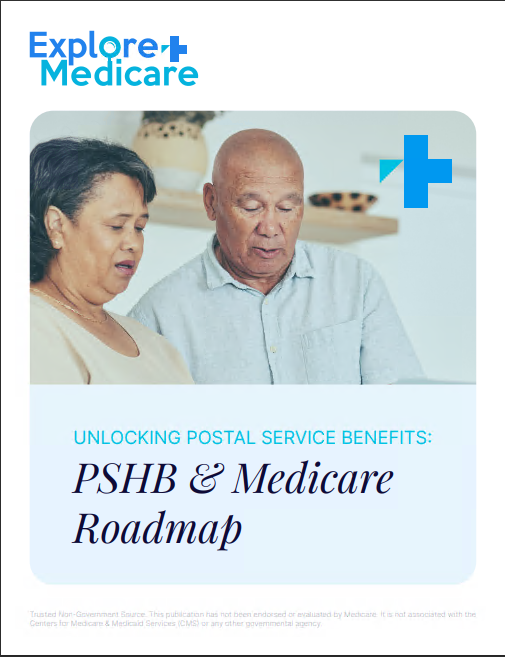Key Takeaways
-
Enrolling in Medicare too early or too late can lead to permanent penalties and gaps in coverage.
-
Understanding the different enrollment windows ensures you avoid extra costs and missed healthcare access.
Why Timing Is Critical for Medicare
Enrolling in Medicare might seem straightforward, but the timing of your enrollment can significantly affect both your costs and your access to care. If you miss certain windows, you might pay penalties for the rest of your life or face delays in coverage.
Knowing when to act is more than just a calendar reminder. It’s about aligning your enrollment with your age, employment status, and current healthcare coverage.
Your First Opportunity: The Initial Enrollment Period (IEP)
The Initial Enrollment Period is your very first opportunity to sign up for Medicare. It spans seven months:
-
Starts three months before the month you turn 65
-
Includes your birthday month
-
Ends three months after your birthday month
If you enroll during the first three months, your coverage begins the month you turn 65. Delay beyond that, and your coverage start date could be pushed, potentially leaving you without insurance for one or more months.
Important: Enrolling after your IEP may result in permanent penalties—especially for Medicare Part B and Part D.
Still Working? Consider the Special Enrollment Period (SEP)
If you’re still working when you turn 65 and have credible health coverage through your employer (or your spouse’s employer), you may qualify for a Special Enrollment Period.
The SEP allows you to delay enrolling in Medicare without penalty. It lasts for 8 months after either:
-
Your employment ends, or
-
Your group health coverage ends (whichever comes first)
However, the SEP does not apply to COBRA or retiree coverage. These do not count as active employer coverage.
Tip: Don’t wait until the eighth month. There is no retroactive coverage with SEP, and any delay can still result in gaps in your access to care.
Missing the Mark: General Enrollment Period (GEP)
If you miss both the IEP and SEP, you’ll have to wait for the General Enrollment Period.
-
Runs from January 1 to March 31 every year
-
Coverage starts July 1 of the same year
This delay can create a significant gap in coverage, especially if you’re without health insurance in the meantime. In addition, you may be charged late enrollment penalties for Part B and Part D.
These penalties are not one-time fees—they’re added to your premiums for life.
Medicare Part A: Free for Most, but Still Needs Timing
If you worked and paid Medicare taxes for at least 10 years, Part A is premium-free. While you can technically enroll in premium-free Part A at any time once you’re eligible, timing still matters.
If you delay and need hospital coverage before enrolling, you could face retroactive gaps or bills you weren’t expecting.
And if you have to pay for Part A, the same rules and penalties for delayed enrollment apply—just like with Part B.
When Part B Timing Hits Your Wallet
Part B, which covers outpatient services, has strict timing rules. If you don’t sign up during your IEP or SEP, you face a 10% penalty for every 12-month period you delay enrollment—for life.
Also, the later you sign up, the later your coverage begins. That could mean months with no access to basic healthcare services.
Part D Prescription Coverage Has Its Own Clock
Prescription drug coverage through Medicare Part D comes with its own set of enrollment windows.
To avoid the late enrollment penalty for Part D:
-
Enroll during your IEP, or
-
Prove you had creditable prescription coverage from another source
The penalty is 1% of the national base premium for each full month you were eligible but did not have coverage. Like Part B, this fee gets added to your monthly premium permanently.
Medicare Advantage Enrollment Has Limits Too
Medicare Advantage (also known as Part C) is an alternative way to receive Medicare benefits. You can enroll in it:
-
During your IEP
-
During the Annual Enrollment Period (AEP): October 15 to December 7
-
During the Medicare Advantage Open Enrollment Period (MA OEP): January 1 to March 31 (only for switching plans or going back to Original Medicare)
If you don’t act within these windows, you may be locked into your current coverage—or left without drug benefits if you didn’t also enroll in Part D.
Avoiding Common Enrollment Timing Mistakes
Understanding Medicare’s timelines can help you avoid costly missteps. Here are common timing errors you’ll want to steer clear of:
-
Assuming COBRA or retiree coverage qualifies for a Special Enrollment Period
-
Not confirming if your employer coverage is creditable
-
Failing to enroll in Part D because you’re not taking prescriptions now
-
Missing your IEP while waiting for retirement
Each of these mistakes can lead to higher costs or loss of coverage at a time when healthcare becomes increasingly important.
If You’re Disabled or Have ESRD
Medicare eligibility can begin before age 65 if you:
-
Have received Social Security Disability Insurance (SSDI) for 24 months
-
Are diagnosed with End-Stage Renal Disease (ESRD)
Enrollment timing still matters in these situations. You’ll be enrolled automatically in many cases, but reviewing your coverage and making any changes within the proper windows remains essential.
Reassessing Your Plan Each Year
Even after your initial enrollment, you should regularly review your coverage.
Each fall, the Annual Enrollment Period runs from October 15 to December 7. This is your chance to:
-
Switch from Original Medicare to Medicare Advantage (or vice versa)
-
Change your Medicare Advantage plan
-
Enroll in or drop Part D
If your health needs change—or your current plan changes its cost or coverage—this is your opportunity to adapt.
Smart Enrollment Timing Helps You Stay Ahead
Medicare isn’t something you set and forget. Each phase of your life—from turning 65 to retiring, to managing chronic conditions—can shift your ideal enrollment timing. Keeping a close eye on these windows helps you stay covered, avoid unnecessary penalties, and protect your budget long-term.
If you’re unsure where to begin or whether you qualify for a Special Enrollment Period, get in touch with a licensed insurance agent listed on this website who can guide you through your options and enrollment windows.








